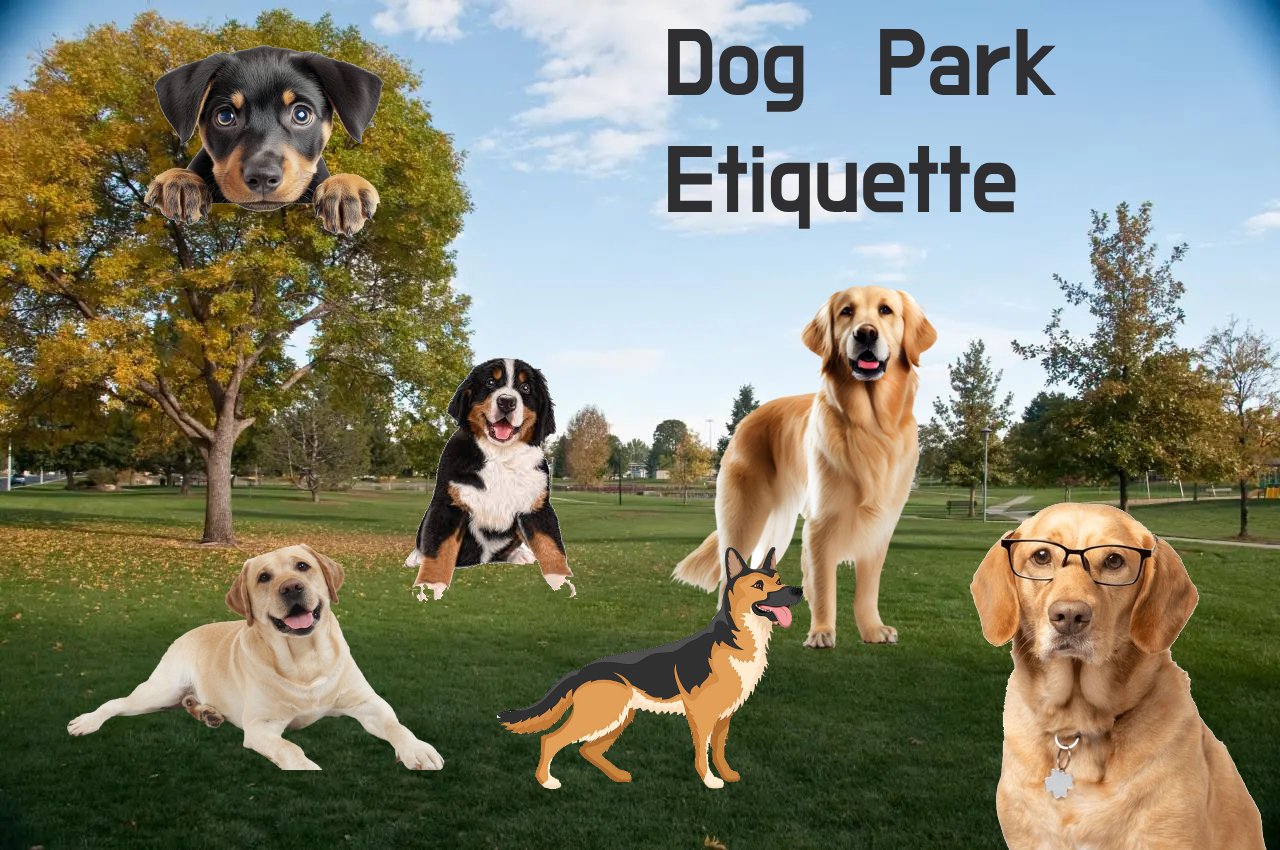Dog Park Etiquette

Dog parks are complicated. In some ways they can be beneficial for dog play, socialization, and enrichment, but in other ways they can prove to be an unnatural setting for dogs, one full of deregulation and stress. There are many things that can go wrong at dog parks, all of which are the responsibility of the dog’s human companions. This article seeks to
Poor leash etiquette
Dogs dog parks should not be restrained to leashes unless they are entering or exiting the park. Forcing a leashed dog to engage with other unleashed dogs is unfair to the dog and causes stress and tension which risks leading to leash reactivity in the future.
Not cleaning up waste
Doing so not only creates an unsanitary environment for dogs and humans but can contribute to a rise in illnesses
Bringing sick or injured dogs to the dog park
Sick dogs promote illness in other dogs and injured dogs risk further injury.
Unfriendly, scared, unconfident, or reactive dogs
If a dog is not completely comfortable in a dog park environment they should not be there. Bringing uncomfortable dogs to such a setting, forcing them to be there, can traumatize or other dogs. Unfriendly or reactive dogs create an antisocial environment and scared or unconfident dogs risk becoming more withdrawn or reactive as a result of poor advocacy on the part of their human companions.
Shock and prong collars and other punishment based training methods
This leads into a bigger conversation about the ethics and effectiveness of aversive training, but forcing shock or prong collars causes undue and unfair stress and doesn’t educate dogs on proper socialization or behavior. Further, punishment based training continues to be ineffective and implementing such training at a dog park increases a dog’s stress which can lead to reactivity and other unsafe behaviors.
Allowing dogs into incorrectly sized areas
Big dog areas are for big dogs and small dog areas are for small dogs. Allowing dogs of multiple sizes to interact can cause injuries as well as human and dog stress and frustration.
Bringing in food
Doing so creates a distraction for dogs and can lead to stress and competition amongst dogs. Eating also proves a distraction and disallows one to focus completely on their dog companion. It should also go without saying that food that is unsafe for dogs definitely does not belong at a dog park.
Dog parks can be a fantastic environment for dogs to play, socialize, and enrich themselves however such an unnatural and deregulated setting can promote undue stress. Here, education is key. In every way, humans should be knowledgeable of the animals in their care, but especially in a setting such as a dog park where many variables exist and many incidents can occur. Dog parks can be great, but they require care and finesse, and humans owe it to both their dog companions and the companions of others to promote best practices while in such a setting.
Further, if one is unconfident in their ability to maintain proper dog park etiquette, training outside, at an appropriate distance for the dog’s learning, introdsuch an environment. Additionally, increase a dog’s ability to focus in stressful or busy environments.
Article written by DemonDog (May 2025)
Find ZDP on Telegram at https://t.me/zooeydotpub
Find the ZDP RSS feed link in our footer any time you're on the website! That url for anyone interested is https://zooeydotpub.zdu.se/feed.xml
Questions, comments or concerns? Check out our Discord server! discord.gg/EfVTPh45RE
Find DemonDog at https://twitter.com/doggydaemons
